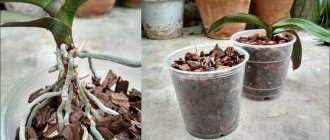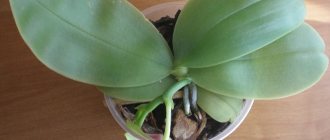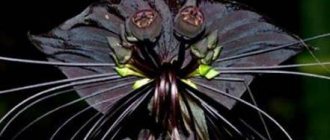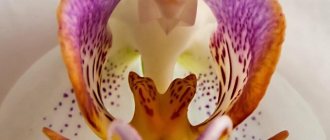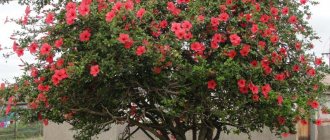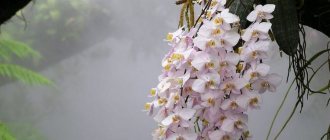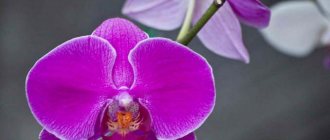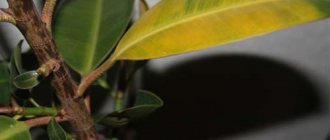Orchids in Russia
Forest orchids of Russia differ in appearance from their tropical relatives, but are no less interesting and beautiful upon closer examination. We may have met them in the wild, but we didn’t even think about what family the plants belong to. There are 136 species of orchids growing in the country (photos and names of some of them will be given in the article). They can be found on the edges and clearings, in wetlands and meadows. These are lyubka bifolia, yarthysh, lady's slipper, calypso bulbous, marsh moth, and spreading orchis. Almost all northern forest orchids are listed in the Red Book. They even grow in the Leningrad, Novgorod and Pskov regions.
What species are found in the Leningrad region?
In the northern zone, surprisingly, a large number of orchids grow. Another thing is that this number is constantly decreasing. These flowers are vulnerable and capricious; they do not like attention from people. They love constancy, and there is almost none of it in the modern world: people build roads, cut down forests.
Despite environmental problems, the following grow in the forests of the Leningrad region:
- Baltic palmate root,
- swamp napper,
- three-cut rook,
- Goodeyera repens,
- Komarnikov Kokushnik,
- oval cache.
The structure of orchids
Forest orchids of the middle zone have common characteristics characteristic of representatives of this family - this is the structure of the root system and flowers. The inflorescence consists of three leaves and three sepals. Most often, the petals are brighter in color than the sepals. But this phenomenon does not always happen. The lip of the flower is a landing place for insects, and therefore it always has a bright color.
The roots of forest orchids are very fragile on the inside, but on the outside they are reliably protected by a thick layer of tissue consisting of dead tissue that has a high absorbency. Thanks to this, the plant receives the necessary nutrition. Orchid roots have the amazing ability to form a fungus - mycorrhiza. A complex mechanism of exchange of substances occurs between the plant and the fungus, which they cannot synthesize on their own. It is for this reason that replanting orchid plants is not always successful, even with specialists. Orchids do not survive without their fungal companion; they either die immediately or after a while.
Neighborhood in the garden orchid bed
Garden orchids are slow-growing, not very large plants, and this feature must be taken into account when choosing a place in the flowerbed. Similar in their pace of development, growth of leafy green mass, long-term growth period and not high in size - garden ferns, cotulas, small-leaved acenas and hostas will be good, non-conflicting neighbors for orchids, they will qualitatively decorate flower beds and buildings on a summer cottage.
Lady's slipper
Lady's slipper - the most beautiful forest orchids of the northern forests. The flower is so charming that it could actually be dedicated to the goddess of beauty and love. It was this type of orchid that was the first to be protected in Europe at the end of the nineteenth century. The plant escapes from annoying animals with the help of its caustic juice, which makes it completely tasteless. But you can’t easily protect yourself from people who like to pick beautiful flowers. It’s hard to imagine, but the plant blooms only in its eighteenth year of life. Therefore, it is not surprising that it is now difficult to find lady’s slippers in the wild.
The genus slipper has about 50 species of orchids (photos and names of some of them are given in the article). They are common in Europe, Asia, North and South America. Only four varieties grow in Russia - spotted, true, large-flowered, etc.
Lady's slipper has a bright yellow lip and very dark purple petals. The shape of the flower itself is very similar to a woman's shoe. The spectacular shape of the orchid and bright color make the plant look like a butterfly.
Is it possible to grow it at home?
Growing a wild orchid at home is possible, but it is incredibly difficult to maintain and there is no guarantee that it will not die.
You need to create the correct and suitable microclimate for this particular type of orchid, provide wintering and many other subtleties that an ordinary amateur gardener cannot observe.
On personal plots
Growing wild orchids at home is almost impossible, but if you really want to have plants of one of the types of wild orchids, you can try planting it in your garden plot, if you have one.
The Orchis species is most suitable for growing in garden conditions , so it is best to purchase it. But if you dig a plant from its natural habitat, such as a forest, be sure to take plenty of soil.
Legends about a beautiful flower
A very interesting legend is associated with this plant of the orchid family. Once upon a time, in one fairy-tale country, butterflies landed on a plant and could no longer fly away, because they turned into beautiful flowers.
But the legend of ancient Greek mythology tells how Venus’s shoes turned into a beautiful flower. Adonis and Venus were caught in a thunderstorm and hid from the weather in a secluded place. And the goddess’s shoe remained lying on the ground. At this time, a man passed by and saw a golden shoe. As soon as he decided to pick it up and extended his hand, it turned into a flower that looked like a shoe.
Where does the forest orchid grow?
The mullet grows only in moist soil and shaded areas. Sunlight does not matter for it, nor does the composition of the soil, because the orchid lives in the forest floor or in mosses. The plant mainly chooses birch or coniferous forests and swamps. However, the main condition for the life of the muzzle is the presence of the mycelium it needs, which will “grow” it.
The orchid reproduces primarily vegetatively using roots. Or rather, stolons that have a growth point. The flower very rarely sets seeds; moreover, they need to fall on the same mycelium in order to obtain a nutrient medium for germination.
In Russia, you can find the flower in the southern Siberian forest-steppes and taiga. And the main growing area is the Murmansk region.
Lyubka bifolia
Another forest orchid is Lyubka bifolia. The flowering plant has a very graceful appearance. On a thin stem there is a spike of white flowers. Near the ground itself there are two sheets opposite each other. By them you can recognize the plant even when it is not blooming. It is worth noting that specimens with two leaves are flowering, and those that have only one basal leaf are non-flowering. During flowering, Lyubka bifolia exudes a stunning aroma, which is especially strong in the morning and evening hours. For this, the plant was popularly called night violet, although it has nothing to do with violets themselves.
The flowering of the plant itself cannot be called beautiful, since the small white flowers are equipped with spurs, because of which the inflorescence appears shaggy from a distance. Each of them contains nectar, which attracts insects. Lyubka bifolia reproduces exclusively by seeds, of which a lot ripen. But, like all orchids, they germinate with great difficulty. A flowering plant attracts the attention of people who pick off flower stalks without thinking that in this way they completely deprive the forest orchid of the opportunity to reproduce. Currently, Lyubka bifolia is on the verge of extinction.
Northern orchids: description and care
Orchis (Orchis maculata L.)
Orchis maculata is the generic and specific name of the spotted orchid. Orchis belongs to the orchid family, and received its specific name because of its lanceolate leaves with brownish-brown spots.
It was this spotting on the leaves that gave the plant its popular name - Cuckoo's Tears. According to ancient manuscripts, there are about 50 folk names for this northern orchid.
They prefer cold, temperate and subtropical climates. They grow in the Northern Hemisphere, from Central and Southern Europe, going far into Asia. In Russia, this type of orchid can most often be found in the mountains of the Caucasus and Crimea.
The height of an adult plant varies greatly depending on conditions: from 15 cm to just over 55 cm.
An orchid stem with 3-4 spotted, linear-lanceolate leaves, tapering into a petiole or covering the entire stem, which ends in a peduncle. The peduncle forms an inflorescence of a spike-shaped, cylindrical shape with numerous flowers.
Flowers with a three-lobed lip, colored with purple splashes. The upper petals form a kind of helmet. The color range of flowers ranges from light lilac or soft pink to violet, depending on conditions and lighting.
The shape of the flowers is a smaller copy of tropical orchids . On the flower-bearing arrows, the flowers are collected in spike-shaped inflorescences, reaching up to 15 cm in length in some species. The lip with the spur is interesting. The red spots on it serve as a guide for various insects. And until the flowers are pollinated, they may not fade for up to 10 days. But as soon as the pollen lands on the stigma, the flower withers.
The flowering period is from mid-spring to late summer.
Photo of the flower Orchis spotted.
Palmate - divided roots in the form of tubers gave another name - finger orchid . Tubers are formed annually, with the death of last year's ones.
Reproduction in nature is difficult and makes it difficult to breed offspring. The main propagation is vegetative. Seed production occurs only in symbiosis with a certain type of fungus . And although many seeds are formed, only a few seedlings germinate.
Lyubka bifolia (Night violet – P. bifolia (L.) Rich)
In Russia it is found almost everywhere, with the exception of the Far North. Prefers coniferous, deciduous and mixed forests. It can be found on the edges, forest clearings and thickets of bushes.
Important! Indifferent to the quality and composition of the soil. Even shaded places do not frighten her, affecting only the quality of flowering and fruiting.
The root part is solid double, undivided tubers, oblong-ovoid in shape, with an extended root end, in place of which a replacement tuber is formed annually.
Stem - depending on growing conditions, height varies from 20 to 60 cm. Leaves - usually a pair. Very rarely found with one or three leaves. They form and grow from the root zone. They are located almost opposite each other.
At the base they narrow into a petiole, which turns into a brownish-colored vagina. The shape is obtuse, oblong-obovate. The color is glossy, light green.
The length is varied, from 8 to 20 cm , and the width is usually about 5 cm. In addition to the main pair, there are one to three more small leaves located higher on the stem.
Inflorescences are cylindrical, spike-shaped, up to 20 cm in length . There are quite a lot of flowers. Under normal conditions, their number can reach up to 40 pieces. Their color is white, with an inconspicuous greenish tip on the perianth. They have a pleasant and strong aroma.
The middle leaf is ovoid, slightly concave inward, up to 7 mm long and facing upward. With two inner petals it forms something like a helmet. The lip is quite narrow for orchids - 10-12 mm. Linear or lanceolate, with a 3 mm, thread-like, green spur. Blooms in summer, usually June-July. Fruits after flowering in August.
Lyubka bifolia.
Reproduction occurs only by seeds . One fruit contains about 15-18 thousand seeds, with 11 fruits on one shoot. Seed germination is possible only through symbiosis with certain fungi.
The first leaf from an underground seedling appears only after 5 years, and flowering, which continues continuously for 5-6 years, occurs only 10-11 years after the appearance of the first leaf.
Lyubka, as a genus, is quite numerous - about 100 species.
Lady's slipper (Cypripedium macranthos)
If this plant can be found, it is only in the eastern part of Europe, in the south of Siberia, the Far East, in the northeastern part of Kazakhstan, in Asian countries - Japan, China and Mongolia.
Slipper grandiflora is a herbaceous perennial with long, thin and creeping roots. Due to the slow growth of the rhizome, 2-4 mm per year, it is almost impossible to determine the age of the plant.
A stem reaches half a meter in height from the rhizome. The average stem height is about 30 cm.
As a rule, the 4 basal leaves are oval, slightly pointed at the end and have slight pubescence with white hairs. The length varies greatly, from 8 to 15 cm, with a width of 40-80 mm.
The formation of the inflorescence in the bud is interesting. The bud from which a flower will be formed in the future is formed long before flowering, approximately from 2 to 5 years. But the flowers are formed quite large, sometimes reaching up to 10 cm in diameter.
The color range of the Shoe is very diverse:
- pink;
- soft pink;
- purple to dark red;
- speckled and without;
- There is even a pure white color.
Slipper grandiflora.
It is the strongly swollen lip, reaching 70 mm in length, that resembles a shoe or slipper. There is a hole in the lip, the edges of which fold inward, creating a kind of rim that expands into a blade. During the flowering period, the vanilla aroma attracts many insects on the 1 or 2 large flowers formed.
Propagated exclusively by seeds. The fruit is a capsule that opens longitudinally. The seeds are very small, weightless, almost dust-like. Millions of seeds are dispersed by the wind, but only a few germinate, finding the fungi necessary for symbiosis.
Attention! Flowering occurs in May-June and can last up to three weeks while waiting for pollination. After pollination it withers within 1-3 days.
Calypso bulbosa
The only or monotypic species of its kind. The plant is rare, listed in the Red Book , growing in the cold and temperate zone of the northern hemisphere.
Prefers moss-covered coniferous forests, among windbreaks or simply fallen trees. Calypso can sometimes be found in wetlands or calcareous soils.
In Russia, the growing area extends from Western Siberia to the Far East.
A miniature orchid, reaching a maximum height of only 20 cm. The rhizome is short, with cord-like adventitious roots and an above-ground tuber.
It is characterized by a single leaf of dark green color on the outside, folded and wavy along the edge of the leaf plate. The inside is a little paler. The leaf is small in size, only up to 5 cm in length and 3 cm in width. The small stem is slightly thickened from below, forming a covering of the false bulb (pseudobulbs) with a filmy sheath.
Usually one flower, with rare exceptions of a pair, emits a pleasant aroma. It looks drooping, with a length of up to 3 cm. The perianths of the same size are directed upwards, have a dark pink color and are up to 1.5 cm in size. The lip looks like a slipper or shoe, slightly compressed at the top. Pale white or pale yellow, with brown-red spots, specks and stripes. At the base of the lip there are 3 tufts of yellow hairs.
Calypso bulbous.
Calypso blooms in May-June. Fruits in July-August.
Reproduction is vegetative or seed.
Important! Like most orchids, in order to produce offspring, symbiosis with fungal hyphae is necessary, which happens quite rarely.
True nester (Neottia nidus avis)
Another rarely seen species of northern orchids. The range is quite wide - non-northern regions of Europe, the Caucasus, Asia Minor, Western Siberia. It is mainly found in shady areas, in thickets, with a high content of humus in the soil or on acidic humus.
It has a powerful rhizome with numerous, thick, short roots that extend radially and form a kind of nest. This formation gave the plant its main Latin name - Bird's Nest.
The yellow-brown stem with an elongated inflorescence (up to 20 cm) grows up to 40-45 cm. The scaly leaves seem to cover the stem. Usually there are from 4 to 6.
The flowers are formed in the form of a dense multi-flowered raceme. The perianth has 6 bell-shaped petals (3 external and 3 internal). One of the inner petals forms a two-lobed lip, significantly longer than the main petals.
Flowering begins in mid-May and ends in June or July. The emanating pleasant aroma attracts many pollinating insects . Depending on the place of growth. Reproduction is mainly by seeds and very rarely vegetatively. As with all orchids of this species, the production of offspring is quite difficult, due to symbiosis with fungi.
The nest is real.
Swamp napper (Epipactis palustris)
A bright decorative representative of this genus of orchids. It is found in forests, wetlands, wet meadows, around springs and springs in the European territory of Russia, in the Caucasus, Crimea, Western and Eastern Siberia.
It is a perennial plant with a height of 30 to 70 cm . The rhizome is long, branched and very creeping. The upper part of the stem is slightly pubescent, light green or pink. Strewn with numerous oblong leaves reaching 25 cm in length. The length of the leaves decreases towards the top of the stem.
The inflorescence is racemose, forming from 10 to 20 flowers , with fairly long bracts. The diameter of the flowers is about 2-2.5 cm. The outer petals are greenish in color with purple strokes. The inner ones are almost white, with pink stripes. The curtainless lip is divided transversely by a deep notch into 2 blades.
Dremlik swamp.
It blooms in summer, in June-July, emitting an intoxicating aroma that attracts whole gatherings of pollinating insects. But it blooms only at 10-11 years of age.
Reproduction occurs by seeds and vegetatively. There are hybrid species in nature.
Fingerroot or Dactylorhiza
One of the most reliable plants for horticultural cultivation is this type of orchid. Grows everywhere in Europe, Asia, North America. Covers zones from the tundra to the subtropics. There are more than 30 species.
Herbaceous orchid with flattened, in rare cases fusiform, lobed tubers.
The stem is evenly covered with leaves, up to 75 cm high, depending on the species. The leaf is lanceolate, vaginal, green in color, occasionally with purple spots.
Quite long bracts are located close to the inflorescence and usually form a pappus at the end of the inflorescence.
The flowers are small in size, with a variety of colors , collected in the axils of leaf-shaped bracts. Formed in the form of spike-shaped inflorescences. The outer side lobes are tilted back or to the sides. The upper outer and two lateral ones are formed into a helmet-like shape.
The lip is wide, flat, three-lobed. Sophisticated with a variety of patterns, strokes and specks.
Fingerroot.
Flowering occurs in June. Reproduction is not difficult and is quite easily propagated by tubers.
Orchis spotted
Another forest orchid is the spotted orchis. This species is the most common representative of the orchid family. There are about 24 varieties of orchis growing in Russia. They all differ in the color of flowers, foliage, and the structure of the root system.
The most common species are: spotted orchis. The perennial plant can be seen in forests at the end of June or in July, during its flowering period. Orchis prefers wet glades, forest swamps and shrubs. It is very beautiful during the flowering period. A description of the spotted orchis would be incomplete without talking about its white or light purple flowers. Which are collected in ears. The leaves of the plant have light gray spots, which is where its name comes from. Flowers secrete nectar, which attracts insects that pollinate it, causing the seeds to ripen. Orchis also reproduces only by seeds. The roots of the plant look like flattened cones. If you dig them up during the flowering period, you will find two tubers, one of which is brown in color, and the second is young and light. It is from this that a young plant emerges the next year.
Orchis has long been used as a remedy. Its roots are valuable. They have incredible nutritional value. For example, for an adult, in the absence of other food, it is enough to eat 40 grams of orchis roots, dried into powder and diluted with water. Other species are also used in folk medicine: helmet orchis (Orchis militaris L.), male orchis (Orchis mascula L.), marsh orchis (Orchis palustris L.) and others... Another name for the species is “Scutellaria”, it emphasizes the shape of the upper flower petal. Therefore, the scientific name of the species is “helmeted orchis” (Orchis militaris L.).
Medicinal properties
One of the reasons for the disappearance of the population of northern orchids is their medicinal properties. For example, young roots of Orchis , which are also called salep tubers, are very widely used for medicinal purposes . The tubers are dried and a white powder called salep is obtained from them, which is used to treat many diseases.
Salep tubers have been used for medicinal purposes since ancient times.
The common slipper is used as a good sleeping pill and sedative . Lyubka bifolia has been used since ancient times to treat impotence .
Important! Of the large variety of orchids, about 4000 are used for medicinal purposes.
The nest is real
This plant always stands out from the crowd of others because it has a peculiar brown color. The stem of the true nest rises from the ground, and in its lower part there are leaf rudiments resembling scales. The inflorescence of the plant consists of fifteen light brown flowers. This forest orchid got its name because of the intertwining of roots that resembles a bird's nest. The nest feeds on rotting plant remains. It does not need light at all, since it has no chlorophyll. Finding such a plant in the forest is very rare. It grows one at a time, not in groups. The nesting bird reproduces only by seeds, like other members of the family.
Use in landscape design
At the moment, several species of the presented plant have been obtained by crossing. You can choose for your garden either the standard version - spotted orchis, or the original species - purple or monkey orchis.
The place for planting the plant should be light or semi-shaded. But some species (for example, helmeted orchis) are better placed in the shade. The crop will grow best in moist, loose soil. Marsh orchis requires very moist soil. Without exception, all plant species love soil enriched with minerals.
Orchis is great for creating a semi-wild part of the garden. It can also become a good decoration for a rock garden, but in this case you should prefer those varieties that do not make high demands on the soil. It is better not to use the plant in a mixed flower bed; it will be hidden by dominant plants. But in monochrome gardens you can use orchis.
You can read the article about monochrome garden.
Orchis is an interesting plant that resembles an orchid. Planting it in the garden will not cause difficulties even for a novice gardener. The plant does not have any special care requirements. It is best to grow orchis in a semi-wild part of the garden. The plant is not susceptible to diseases and pests, looks attractive and is widely used in medicine.
Goodyear repens
Goodyear creeping is a very rare plant that is found in pine forests among mosses. The leaves of the plant are collected in a rosette and look very much like plantain foliage. But at the same time they are much smaller and decorated with a mesh pattern. Goodyear also belongs to the orchid family. It blooms in mid-summer. The stem grows from a rosette, its height is 15-20 centimeters. And the top is decorated with white flowers. By the end of summer, seeds ripen in small boxes of the plant. They are so small that they are not even visible to the naked eye.
Unlike other plants, they consist of homogeneous tissue, and there are no root primordia or leaves in them. Goodyear has long creeping rhizomes, the surface of which is covered with a dense layer of mushroom threads. Thanks to them, the plant absorbs moisture from the soil. Such close cooperation between plant and fungi is called symbiosis. Gudera cannot grow without mycorrhiza. Even the seeds of a plant will never take root without a fungus. Due to the fact that working with our forest orchids is very difficult, they have practically not been touched by the hands of breeders, so they live the way nature created them millions of years ago.
Composition and beneficial properties of the plant
Dried tubers of the plant are used for treatment in folk medicine. This drug is called salep; in some regions of Russia it is also called red root.
All types of orchis (photos can be viewed in the appendix to the article) have properties beneficial to the human body, but in folk medicine, spotted orchis is most often used. This is due to its widespread (unlike other species) distribution.
Until now, science does not thoroughly know all the beneficial properties of orchis. But the basic composition of the plant was determined in laboratory conditions:
- 50% - mucus, the beneficial properties of which have not yet been fully studied;
- 30% - starch; its presence explains the beneficial effects of the drug on the gastrointestinal tract;
- 13% - dextrin - low molecular weight carbohydrate, a mixture of glucose polymers; is an irreplaceable natural source of fiber, which, under the influence of gastric juice enzymes, easily decomposes and has the ability to remove radionuclides from the body, purifying the blood;
- in addition, spotted orchis root is rich in sucrose and bitter substances responsible for normalizing metabolism;
- essential oils contained in the root of the plant have a beneficial effect on the male reproductive system and help restore lost male strength;
- mineral salts of plant origin have a pronounced diuretic effect and normalize the functioning of the immune system.
All types of orchis have properties beneficial to the human body.
In some eastern countries, orchis root is successfully consumed as food, believing that men's health and reproductive functions depend on it. Interestingly, the dry root, collected at the end of summer, has the opposite effect on the male body - it reduces sexual activity. This occurs due to a higher concentration of the corresponding substances in the root of a plant that has already prepared for hibernation.
As you can see in the photo of orchis, its root even looks like a male genital organ. Perhaps this is why traditional medicine began to use it for male impotence and impotence.
Horticultural crops
And yet the beauty of orchids has not gone unnoticed by gardeners. Among the forest orchids, there are still some that can be grown in home plots. These include the forest orchid - leopard lily. A beautiful exotic plant can be grown from seeds, which some nurseries sell online. The plant's homeland is China, but it takes root well in our gardens. Belamkanda chinensis, also known as forest orchid and leopard lily, has a very long flowering period. The plant is a perennial and reproduces well in gardens by self-sowing.
It came to be called the leopard lily due to the presence of dark orange spots on the beautiful flowers. The plant is also called blackberry lily because its seeds resemble these berries. In general, the culture is unique and there is nothing else similar to it in the world. The plant is incredibly common throughout China. In addition, it can be seen in Indonesia, Japan, Northern India and Eastern Siberia. In nature, the plant grows in sparse forests, on rocky cliffs, on the slopes of rice fields and even along roadsides.
Belamkanda was brought to us from East Asia. Now it is grown in gardens as an ornamental plant with graceful, beautiful flowers. The perennial plant has yellow-orange or reddish flowers with characteristic dark dots. Moreover, they are collected in large inflorescences in the form of wide brushes. The blossomed flower reaches five to seven centimeters in diameter.
In our latitudes, the orchid begins to bloom at the end of July. It pleases with its beauty until the end of August, and sometimes until the beginning of September. An interesting fact is that each flower has a very short life. It only blooms for a couple of hours. It opens in the first half of the day, and begins to fade closer to sunset. Externally, fading simply looks like curling. And the next day, in the morning, new flowers are already opening on the stem. Here is such a unique plant - leopard orchid.
In autumn, the plant ripens seeds in capsules that look like blackberries. Belamkanda reproduces well by dividing rhizomes, as well as by seeds, which are grown even indoors for later replanting in open ground.
Dremlik broadleaf
This one is tenacious. It reproduces not only by seeds (by the way, they say it has good germination) but also by rhizomes. The flowers are quite spectacular, relatively large, 2 centimeters in diameter, and the inflorescence itself is large. If you decide to grow on your plot, be prepared to wait a long time: it blooms no earlier than 11 years after germination from seed. It is absolutely unsuitable for cutting: if you say that the flowers are held on the stem by snot, then you are greatly flattering this plant. They fly off at the slightest touch. At the same time, the plant somehow manages to be pollinated by insects that actively crawl on it. That's probably why they haven't torn it out yet. As a result, it turns out that the plant is not so rare, it can also be found in Moscow, near the university (you can find it if they don’t mow it along with the lawn on which these dormants grow). Where exactly? See map:
It blooms starting in July and can bloom for a long time. Prefers drier and looser soils; in lighting it prefers partial shade, but closer to the light. They say it loves oily, humus-rich soils, but I photographed this particular specimen in a young pine forest at the bottom of a sand pit, and these specimens are much larger and healthier than what can be found near Moscow State University. Often grows in large groups. The plant is large and quite impressive; I think if it weren’t for such a long period before entering the flowering season, it would have been introduced into garden culture long ago.
